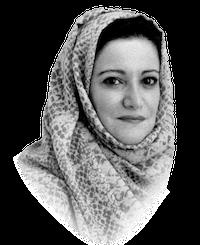
What do women have to do with climate change? Are they affected differently than men? Are there specific issues that concern women with regards to climate change?
As COP28 in the UAE is around the corner and many preparatory meetings and events are taking place, the gender dimension is still largely going under the radar, with national interests, development and funding dominating the debates. But women could hold the key to moving forward.
COP is short for the Conference of the Parties, which is the decision-making body of the UN Framework Convention on Climate Change, launched in 1992 to combat “dangerous human interference with the climate system.” The Kyoto Protocol, signed in 1997 and which ran from 2005 to 2020, was the first implementation of measures under the convention, followed by the Paris Agreement, which entered into force in 2016.
By 2022, the UN Framework Convention on Climate Change had 198 parties. They meet annually to assess progress in dealing with climate change, with the main goal being to reduce greenhouse gas emissions. It is good to see that one of the themes at this year’s conference in Dubai is gender equality, meaning it will focus on policies and investments to achieve a “gender-just” transition that enables the full, equal and meaningful participation of women and girls in climate action.
As in every disaster, whether natural or human-made, women are the most affected by the changes in climate and their consequences. According to the UN Environment Programme, about 80 percent of people displaced by climate change are women. Yet, as with every crisis, women’s needs and views are the least taken into consideration when deciding on policies and programs. This is due to the prevailing gender inequality — as proven again in the recently released UN Development Programme Gender Social Norms Index report — that is underpinned by structural power relations between women and men that impact the former’s equal access to education, employment, healthcare, financial resources, etc.
How is this related to climate change?
Women play a major role in agricultural production in many countries — a third of women’s employment worldwide, and nearly half in developing countries, is in the agricultural sector — yet only 12.6 percent of women are landowners and most often they lack equal access to agricultural resources and services or even official decision-making processes. Consequently, when droughts, floods or wildfires caused by global warming occur and affect crops, women have fewer financial resources, technological resources and options for sustainability and resilience.
On the other hand, when women are involved in the decision-making process for adopting climate change policies that strengthen mitigation and adaptation programs suitable for women’s needs, this reflects in better outcomes for agricultural yields, reducing hunger, reducing climate change and building climate resilience in communities. However, women’s participation in decision-making and their leadership potential is hindered by their unpaid care responsibilities for the young, the sick and the elderly, which increases in the aftermath of climate-caused crises. They are also the primary gatherers of food, water and fuel for their families. Consequently, this reduces their chances of accessing education and employment and can expose them to more gender-based violence. Thus, ignoring how climate change impacts women and marginalizing women in the decision-making process perpetuate a cycle of disempowerment, vulnerability and discrimination.
We need better data and analysis at the community level to identify where the inequalities are and how climate change impacts women and men differently in order to develop the right mechanisms and programs that meet the needs and expectations of both men and women.
While many countries have taken steps to integrate gender across different priority sectors within their national climate action plans, as agreed under the UN Framework Convention on Climate Change — which calls for women’s full, equal and meaningful participation in the international climate process and aims to ensure a prominent role for women in decision-making and in climate action — they still need to be effective in implementing and achieving these goals. Gender parity in this regard is not only about equal numbers of participants in national delegations and policy and decision-making bodies, but equal impact on policies and initiatives.
Furthermore, states should take measures to empower women in terms of their disaster preparedness, including protection against violence and providing alternatives for their livelihood if they are faced with a climate crisis, especially in rural areas. Harnessing local women’s knowledge and experiences and supporting women’s initiatives and organizations has been shown to be effective in community recovery and resilience. Empowering women to actively participate in disaster planning and emergency response is important for quick and effective community recovery.
Women are not passive victims of climate change, but active community leaders in developing solutions, mobilizing their community and taking care of their families despite the obstacles and challenges they face. There are many examples of women across the world stepping up and taking action in the face of climate change to support and protect their communities and raise awareness about natural resource management and renewable energy sources.
When women are involved in the decision-making process for adopting climate change policies, this reflects in better outcomes.
Maha Akeel
A report that looked at 17 case studies from around the world on women’s inclusion in resource decision-making in the forestry and fisheries sector found that women adopt innovative and preventive measures at a faster rate than men. It also found improvements in the management of the resources and resource conservation, as well as greater compliance with rules, transparency and accountability.
Whether it is women in Bangladesh who developed wind and flood-resistant housing foundations for their communities, women in rural Sudan who formed a union to improve food security or women in Nicaragua who established seed banks to protect biodiversity and sustainable livelihood, along with many other examples across the world, women are resilient, innovative and adaptive. They are a force for change and development. Sharing and learning from these experiences through networking, data gathering and collaborating on research and experiments would help in finding sustainable solutions. However, to benefit from women’s ability to address climate change, the gender inequalities must be tackled first.
Maha Akeel is a Saudi writer based in Jeddah. Twitter: @MahaAkeel1












